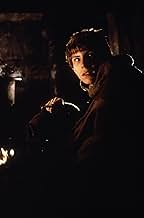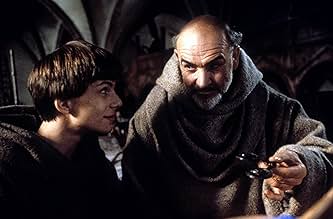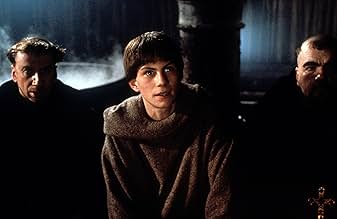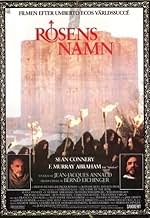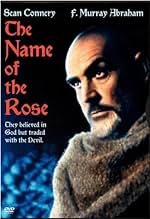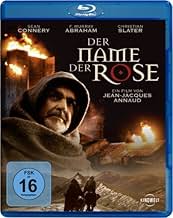Nel 1327 in un'abbazia benedettina dell'Italia del Nord in sette giorni si succedono sette morti violente. Il francescano Guglielmo di Baskerville, giunto all'abbazia col novizio Adso da Mel... Leggi tuttoNel 1327 in un'abbazia benedettina dell'Italia del Nord in sette giorni si succedono sette morti violente. Il francescano Guglielmo di Baskerville, giunto all'abbazia col novizio Adso da Melk, cerca di scoprire il colpevole e il movente.Nel 1327 in un'abbazia benedettina dell'Italia del Nord in sette giorni si succedono sette morti violente. Il francescano Guglielmo di Baskerville, giunto all'abbazia col novizio Adso da Melk, cerca di scoprire il colpevole e il movente.
- Ha vinto 2 BAFTA Award
- 17 vittorie e 6 candidature totali
- Pietro d'Assisi
- (as Donal O'Brian)
Trama
Lo sapevi?
- QuizSean Connery's career was at such a low point when he read for the role that Columbia Pictures refused to finance the movie when Jean-Jacques Annaud cast him as William von Baskerville.
- BlooperThe secret message on the parchment is exposed three times. The translator heated it to reveal the location of the library, William of Baskerville heated it again when he was in the scriptorium and yet again to show the others the message. When a message is written in lemon juice, heating it will cause it to become exposed because the sugar in the juice is caramelized and thus would not disappear again.
- Citazioni
William of Baskerville: But what is so alarming about laughter?
Jorge de Burgos: Laughter kills fear, and without fear there can be no faith, because without fear of the Devil there is no more need of God.
- Curiosità sui creditiThe opening credits read - A palimpsest of Umberto Eco's Novel The Name of the Rose
- Versioni alternativeCertain prints of the movie have the sex scene between Adso and The Girl removed in order to comply with local laws.
It's true that the film, directed by Jean-Jacques Annaud, has to skip, or skirt, much of Eco's detail - the famous pages-long description of the doorway, for example, is acknowledged by a few camera shots - but it takes the novel's literary strengths and offers a cinematic equivalent: a vivid depiction of monastic life which thrusts the viewer into the period of the story. In this respect, the production is exemplary: cinematographer Tonino Delli Colli, art director Dante Ferretti and composer James Horner were all operating at the top of their game.
And, as Renton in Trainspotting (1996) knows, Sean Connery proved a perfect choice as William of Baskerville, the 14th-century Sherlock Holmes figure investigating the deaths in an Italian monastery. It's one of Connery's best performances, a happy marriage of character acting and star casting: he suits the physical description of William and he properly conveys the character's wisdom, caution and sense of regret. Christian Slater's Adso, the narrator of the novel, is a surrogate for the viewer, expressing bafflement at the mystery story and awe at William's deductive powers; while F. Murray Abraham works wonders with the underwritten part of the inquisitor Bernardo Gui.
The Name of the Rose is one of the most underrated movies of the eighties. That it wasn't brilliant should not detract from the fact that it's as good as it is.
- edwardlamberti
- 15 set 2004
- Permalink
I più visti
Dettagli
- Data di uscita
- Paesi di origine
- Lingue
- Celebre anche come
- El nombre de la rosa
- Luoghi delle riprese
- Kloster Eberbach, Eltville Am Rhein, Hessen, Germania(interiors: monastery church)
- Aziende produttrici
- Vedi altri crediti dell’azienda su IMDbPro
Botteghino
- Budget
- ITL 30.000.000.000 (previsto)
- Lordo Stati Uniti e Canada
- 7.153.487 USD
- Fine settimana di apertura Stati Uniti e Canada
- 494.571 USD
- 28 set 1986
- Lordo in tutto il mondo
- 7.153.487 USD
- Tempo di esecuzione2 ore 10 minuti
- Colore
- Proporzioni
- 1.85 : 1
Contribuisci a questa pagina


